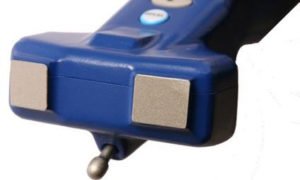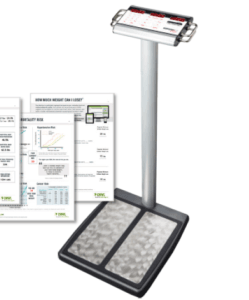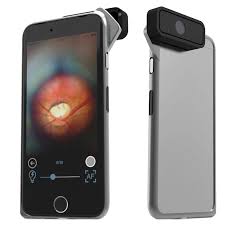The Every Ancillary Podcast is a weekly podcast for Medical Sales reps looking to grow their product offer. This podcast covers the new Diabetes Diagnostic & Treatment Protocol. A new program to help doctors proactively care for their diabetic and prediabetic patients while generating new revenue.
Hello and welcome to the Every Ancillary Sales Podcast. I’m your host Michael Berg. Joined as always by Viv Hudson. And Viv we have an important topic today. We’re discussing, probably the most lucrative ancillary program, for the second week in a row, and that’s the Diabetes Diagnostic and Treatment Protocol.
After last week’s launch, we’ve had a lot of questions and a lot of interest from both sales reps and physicians already, so that’s really exciting. We thought that in this podcast, we would help to elaborate on some of the components of the program to help you as a sales rep. We will break it down a little bit for the physicians so they can see how necessary and how easy it is for doctors to implement this particular program.
There are a lot of components to it. I’m not going to lie. What we did was worked out how to maximize reimbursement and maximize meaningful use. The protocol gives the patient the best opportunity for early diagnosis and treatment. This protocol also has the potential to prevent as many instances of diabetes and of related conditions to diabetes as we can. But there are a lot of components to this model. But really, this is not as complicated as it seems. There are really three different buckets that all of these programs fall in to.
It’s either going to be something to diagnose the patient, something to treat the patient, or something to monitor the patient. And we’re basically showing the doctor every angle to take full advantage of all of the available codes, and give that patient the best chance to avoid complications from diabetes, or avoid diabetes altogether. So Viv, can you walk us through the initial assessment? What’s going to happen in that patients first visit?
First, we have patient capture software that helps the practice to identify suitable patients for the program. One of the first things that they’re going to do is once they front up at the practice, they will be weighed. They weigh in on a bioimpedance scale that comes with the program. And it gives a super report, I think it’s four or five pages. The report has been specifically formulated to provide weight loss plan options for the patient. It also assesses the full body composition of the patient. Their BMI, fat and muscle mass and it gives them a lot of really good information. The report provides a breakdown of options and costs for the weight management plans. This then guides the physician on how to handle that patient forward with their weight loss program.

Loss of sensation can happen very early in a patient who is diabetic or even pre-diabetic. This is a classic sign of neuropathy, the DND helps you find that a lot earlier than waiting for the patient to go, “Oh, I can’t feel my toes.” Once we have that diagnosis that there is some loss of sensation, that segues into the patient returning for a second test. And that is with the TM Flow. The TM Flow is going to give you a much more comprehensive report. It does a bioimpedance through the feet and assesses the fine nerve fibers and the microcirculation in the feet. It’s also going to look at the patients’ autonomic response. The patient can also have a retinal scan with the D-Eye.
The TM Flow helps with differential diagnosis around peripheral disease… the lower extremity, whether it’s cardiovascular or autonomic. The other really important thing about this is, it’s going to help doctors see what kind of level of insulin resistance is occurring in the patient. The test overall gives them a good insight into patients who are pre-diabetic as well.

As is the digital scales. The digital scales are blue tooth enabled. And it sends a reminder to the patient to weigh in daily. That information gets transmitted through our remote patient monitoring management company and gets transmitted right to the doctors EMR. They can then easily track the progress of each patient.
Beyond that, there’s really not a lot to this, Viv. The big part of this is going to be the weight loss program, of course. But, remember this is a turn-key model for your physicians. So, you don’t have to worry that they’re going to be put out there and not be given every opportunity to make this work in terms of staff time and revenue. The practice gets set up with each vendor who is highly hands-on PLUS there are two days of in-office training. We do equipment on the first day and on the second day, we handle all of the treatment protocols.
Once you’ve done the initial battery of tests, it’s just that ongoing management. So we’ve got the D-Eye retinal scan they’re going to do, the max pulse that they’re going to do. And the DND that they can repeat again during the year. But all these tests are done within 2-3 minutes. The TM Flow, that’s a seven or eight-minute test. All the tests are billable as well. It is certainly going to be worthwhile, the practice time to be able to do those. And in many cases, a medical assistant or office staff can actually do that testing so it frees up the physician time for the important things that they need to put their attention to in the office.
The other thing that it’s going to create is that loyalty to the practice, because they are returning to the practice on a regular basis. It’s going to help really grow that relationship and when people lose weight, as well, what do you do? You tell everybody else about it. Or people notice and go, “Oh, what are you doing?” So it’s going to be, certainly, a good way to help drive new patients to that practice as well. Once you find something successful for weight loss, people are always going to talk about it. So that’s going to be a really nice thing for the practice to benefit from as far as growing their business.
Absolutely. There’s a big contingent of people that are looking for a non-surgical, non-pharmaceutical solution to weight loss. And these programs have been proven to be effective. This is why we added this to the platform. Not to mention, hitting all those quality use measures. This is exactly what CMS is trending toward for physicians. This is, they’re going to reward more programs like this that stress prevention and these are cheaper alternatives for them. I can’t remember, was it 300 plus billion dollars spent on diabetes care each year. I think 330 billion dollars. That is more than any other country spends on health care period.
That’s an unbelievable amount of money. If you can prevent one patient from going from pre-diabetic to diabetic there has to be improved outcomes and cost savings. I can’t even imagine the tens of thousands of dollars that following this protocol ends up saving the healthcare system. You have to use some logic here. As a sales rep. If you want to be selling products that are trending in the right direction, look for the products that ultimately saves health care dollars. And those are always good programs to stick with.
Viv, how do they get started?
To get started, go to Every Ancillary. And if you haven’t registered already, go ahead and register. And then once you’ve registered, look for the Diabetic Diagnostic and Treatment Protocol in there. And then add that to your bag. And that will give you all the information that you need to get started. Some videos are in there to help with training and also educating your physicians on what the program is all about. It’s designed to be easy and turnkey and really creates some great revenue, not only for you as a sales rep, but for the physician and really help improve outcomes in the patient.


